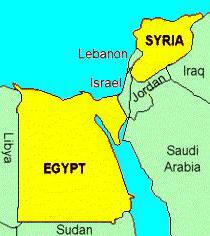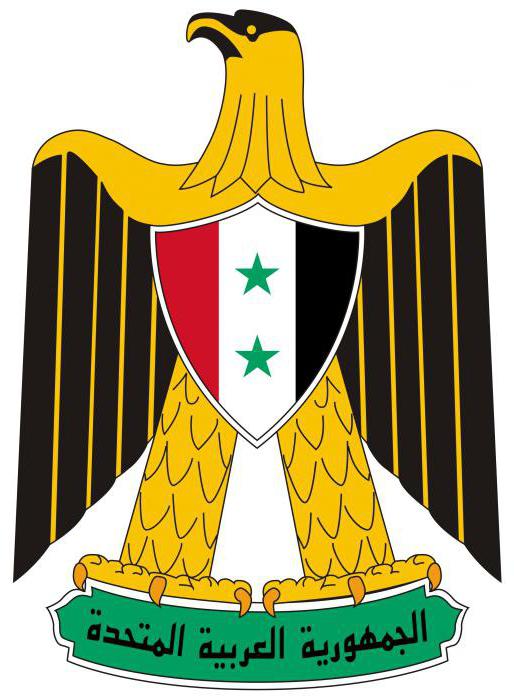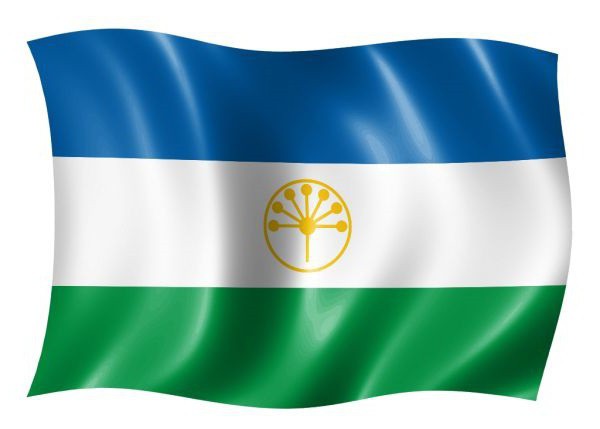Объединенная Арабская республика создана в 1958 year as part of Egypt and Syria and lasted until 1961, when the latter came out of it after the coup. Egypt continued to be officially known as the SAR until 1971.

Association Background
February 1, 1958 political and military groupSyrian leaders offered Egyptian President Gamal Abdel Nasser a merger of the two states as a first step towards a large pan-Arab state.
Настроения к объединению всех арабов были Traditionally very strong in Syria, and Nasser was a popular leader throughout the Arab world after the 1956 Suez War. The Arab Socialist Renaissance Party (Baath) was the main advocate of such a union.
At that time in Syria there were contradictions betweenCommunists strengthening their positions and the Baath Party in power, which was experiencing an internal crisis, from which its prominent members sought to find salvation in the form of an alliance with Egypt. Syria was a democratic state after the overthrow of the military regime in 1954, but the army continued to play a dominant role in the state at all levels. This did not suit the charismatic and authoritarian Nasser, who sought to fully incorporate Syria into the “Egyptian” system of power under his leadership.
The beginning of the union
Nasser’s final terms for the union were decisive and not negotiable:
- a referendum on the support of the people of the unification of the two countries;
- dissolution of the parties;
- withdrawal of the army from politics.
While the referendum seemed reasonablethe event to the majority of the Syrian elite, the last two conditions were extremely disturbing to her. Many believed that their adoption could destroy the political life in Syria. Despite these fears, the Syrian leaders realized that it was too late to turn back. The elite in Syria view the merger with Egypt as the lesser of two evils, as a means to resist the growing influence of the communists. They believed that Nasser’s conditions were unfair, but, given the strong pressure inside their own country, they believed that they had no other choice.
Egyptian President Nasser and Syrian leaderQatli 1.02.1958 signed a preliminary agreement on the unification of their countries. Although the signed declaration stated that the United Arab Republic was made up of Egypt and Syria, it was also emphasized that any Arab country could join the UAR. The referendums in the same month in both countries confirmed the support of the union by their peoples.

Nasser became president of the UAR and very soon began repressions against Syrian communists and opponents of the union, who were dismissed from their posts.
The real practice of building the political system of the UAR
Supporters of the alliance with Egypt believed that Nasser would use their Ba'ath party to rule Syria (in the photo below, he was shown in company with the founders of this party in 1958).

Syria and Egypt: two unequal parts of the UAR
Although Nasser allowed former Baath party membersto occupy prominent positions in the structures of power, but they have never attained that weight in the management of their own country like Egyptian officials. In the winter and spring of 1959-60. Nasser slowly "squeezed" prominent Syrians from an important perspective. In the Syrian Ministry of Industry, for example, seven of the thirteen positions were filled by the Egyptians. In the General Petroleum Administration, four of the six largest leaders were Egyptians.

Economic transformation in the UAR
In June 1960, Nasser attempted toeconomic reforms that were supposed to bring the Syrian economy based on private property closer to the Egyptian one based on the domination of the public sector. Nasser embarked on an unprecedented wave of nationalization in both Syria and Egypt. At the same time, the opinion of the Syrian elite was ignored. All cotton trade was brought under the control of the government, and all import-export firms were also nationalized. Nasser announced the nationalization of banks, insurance companies and the entire heavy industry. Land plots over 100 feddans (1 feddan = 4200 m2) were subject to seizure from the owners (peculiarform of "expropriation" in Arabic). Taxes on peasants were drastically reduced to a full until abolished in some cases. A ninety percent tax was imposed on all incomes above 10,000 Egyptian pounds. Workers and employees were admitted to the management of enterprises and were entitled to 25% of their profits. The average working day was also reduced to seven hours without a pay cut.

The rise of anti-Egyptian sentiment
Not everyone in Syria liked such transformations.in the spirit of "Arab socialism". The Syrian army officers resented their subordinate position in front of Egyptian officers, and the Syrian Bedouin tribes received money from Saudi Arabia to prevent them from becoming loyal to Nasser. In addition, Egyptian-style land reform led to the decline of Syrian agriculture, the Communists began to gain influence again, and the intellectuals of the Baath party, who initially supported the alliance, changed their moods.
At the same time, in Egypt itself, the situation was more positive, with a 4.5% increase in GNP and a rapid growth in industry due to its development of the Syrian market. It also contributed to growing discontent in Syria.
Relations with neighbors
Newly Established United Arab Republicwas perceived as a serious threat in the neighboring kingdoms (in that period) - Iraq and Jordan. Syria was considered by both monarchies as a source of incitement to the revolution and a haven for conspirators acting against the Jordanian King Hussein and the Iraqi monarch Faisal II. Egypt was generally viewed as a state hostile to the West, which supported both monarchical regimes. Therefore, the United Arab Republic was viewed by Iraq and Jordan as a direct adversary. As early as February 1958, an anti-Naserian military alliance was created between the two countries with a single military command and a single military budget, 80% of which was to be provided by Iraq, and the remaining 20% by Jordan. In fact, there was a federation of the two countries, however, quickly disintegrated.
Недружественно встретили создание ОАР и в neighboring Lebanon, whose president, Camille Chamoun, was an adversary of Nasser. The country began clashes between supporters of joining the UAR and supporters of independence.
Revolution in iraq
July 14, 1958, Iraqi officers stagedmilitary coup and overthrew the monarchy in the country. Nasser immediately recognized the new government and declared that "any attack on Iraq would be tantamount to an attack on the UAR." The next day, American marines and British troops landed in Lebanon and in Jordan to protect the two countries from the attack of pronaser forces.
Насер предполагал, что Объединенная Арабская The republic will soon be replenished with a new member - Iraq. However, the new Iraqi leadership, seeing the fate of their Syrian colleagues in the UAR, was in no hurry to give up power. And in 1959, Iraqi Prime Minister Qasem completely stopped negotiations on joining the UAR.
In 1963, after coming to power in Syria andIraq, representatives of the Baath Party, was made a new attempt to unite these countries with Egypt. The leaders of the three countries even signed a joint communique on the creation of the Federation. But further the business of unification did not move because of the disagreements arising between the countries about the state structure of the new country.
The collapse of the UAR and its continuation
September 28, 1961 a group of officers committeda coup and proclaimed the independence of Syria from the UAR. Although the leaders of the coup were ready to continue the existence of the union under certain conditions that put Syria on an equal footing with Egypt, but Nasser refused such a compromise. He originally intended to send troops to overthrow the new regime, but refused this intention as soon as he was informed that the last of his allies in Syria recognized the new government. In the speeches that followed the Syrian coup, Nasser stated that he would never give up his goal of a final pan-Arab alliance. However, he will never achieve new tangible success on the way to this goal.
Hopes of Nasser on the revival of the union were reflected in the fact that with him Egypt continued to bear the name "OAR", which lasted until 1971.
Новую попытку объединить арабские государства undertook in the 70s the Libyan leader Muammar Gaddafi. As a result of his efforts, the Federation of Arab Republics (PAR), consisting of Libya, Egypt, and Syria, emerged in 1971 and existed until 1977 (in the photo below, the leaders of the three countries sign the Federation Treaty).

United Arab Republic: coat of arms and flag
OAR adopted a flag based on Arabic designThe Liberation Flag, raised during the Egyptian revolution of 1952, but with two stars representing the two parts of the UAR. Since 1980, he is the official flag of Syria. In 1963, Iraq adopted a flag that was almost identical to the flag of the already defunct SAR, but with three stars representing the hope that the united country would be restored.

ОАР имела герб, центральной фигурой которого был so called Eagle of Saladin - the image of an eagle, repeating the corresponding bas-relief on the western wall of the Cairo citadel, built by Saladin. On the eagle's chest is a shield with three vertical colored stripes - red, white and black, and two green stars in the central white band. These four colors are so called. "Pan-Arab colors", which were the colors of the flags of various Arab caliphates.
The green ribbon in the claws of an eagle is inscribed in Arabic letters: "United Arab Republic".
What money was used in suchpublic education like the united arab republic? Coins in denominations of one Egyptian pound and one Syrian pound theoretically had equal circulation in the SAR, although in fact their use was localized in the relevant parts of the country.













